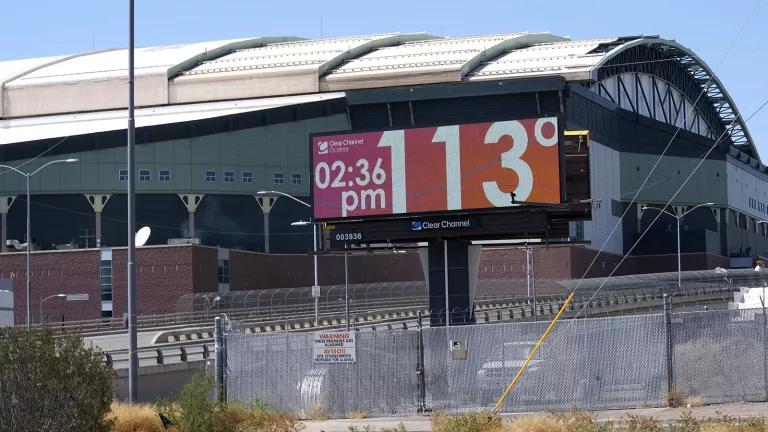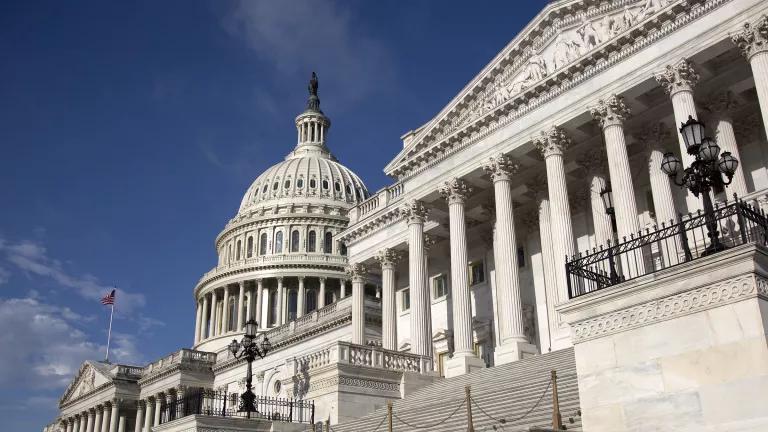Today, NRDC is launching a new web tool called “Climate Change Threatens Health.” These pages (www.nrdc.org/climatemaps ) bring the effects of climate change down to the local level. Users can zoom in on 5 US maps, see how their health is vulnerable to climate change, and learn about what’s needed to protect their families and reduce climate change.
The picture taking shape across the country shows some communities drought-stricken and stressed for adequate safe, clean water supplies; others coping with historic flooding; hotter, drier summers, with greater wildfire risks and more air pollution; most of the nation sweltering under extreme heat; and residents in many states hearing the buzz of mosquito activity for longer and longer seasons each year. Many areas face a combination of these multiple climate-health vulnerabilities.
The medical and national security sectors of our economy have already recognized the need to prepare for the health-related impacts of climate change. It’s time to devote more resources and funding to climate-health preparedness in the new, more volatile climate.
Unfortunately, around the country, many state and city governments continue to largely ignore the threat climate change poses to our health. We spent several months analyzing the status of climate-health adaptation in the United States, and digging through hundreds of pages of climate action plans to see what measures our state governments are taking to help protect our health from these impacts.
Only thirteen states (AK, CA, FL, ME, MD, MI, NH, NY, OR, PA, VA, WA, WI) have developed climate adaptation strategies or state climate action plans that include at least one climate-health adaptation measure.
That means 37 states lack climate-health preparedness plans. Not good.
Consider the recent flooding along the Mississippi River: of ten states that border the river, only Wisconsin has a health-adaptation strategy. So being vulnerable to flooding doesn’t mean states have necessarily developed a flooding-health preparedness plan.
Furthermore, while those thirteen states have taken the positive first step by having health preparedness plans, some parts the plans remain rather general, and fail to map out a clear adaptation strategy. A preparedness plan ideally identifies the responsible agencies and provides a clear roadmap of direct actions.
As we see pictures on the news – or out our windows – of communities being damaged and broken by flooding rivers or violent storms, it is obvious that we need move quickly beyond the planning stage. We should be starting to implement the necessary actions to prepare ourselves for the realities of climate change. While a few states, for example Washington and Maryland, have developed strong health adaptation strategies, today’s overall climate-health preparedness landscape is disheartening.
A recent series of reports by Scientific American examined the contribution of climate change to several recent extreme events, and explained the science behind why these types of events will only become more frequent in the future. The series further emphasizes that the impacts of climate change are no longer some distant threat; they are happening now and are getting worse.
And why are these impacts happening? Climate change is caused by increased levels of carbon pollution. Our webpages illustrate the health dangers of congressional efforts to dismantle the Clean Air Act. That Act now aims to limit carbon pollution, maintain public health protections, and reduce the worst of the threats our webpages describe.
Governments need to take climate threats to public health seriously, and secure the resources needed to help our communities adapt to our uncertain future. And we can take steps to limit the rising tide of climate change vulnerabilities in our own backyards. It’s time that we start connecting the dots between climate change & our health, and make climate-health preparedness a personal, national priority.



